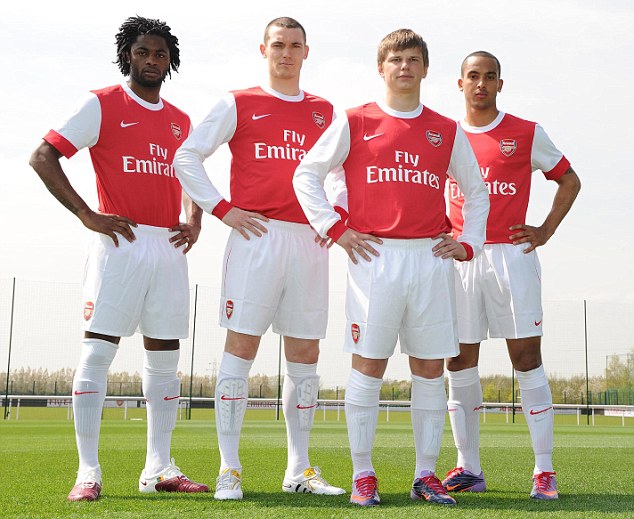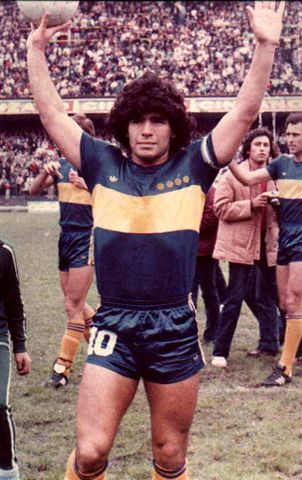Football After The World Cup
Since the World Cup is about 50 % over. DJ Candle and I decided for those who are new to the game and are interested can get prepared for the upcoming 2010 League Campaign. For those who don't realize in the League Season it's pretty much ran like the NBA..off-season transfers (buys/signings) and (Player loans) or aka the Transfer Window...teams have a certain period to seek the player they desire.Each Season has about 50 - 40 games
Leagues range from England to Japan and consist of various teams and players..i.e. Ronaldo who plays for Portugal's World cup team his club team is Real Madrid of the La Liga...aka.. the Spanish Premier League.
Links below are awesome spots to find various games throughout the season online.
www.myp2p.eu
www.atdhe.net
www.justin.tv
www.veetle.com
Since the World Cup is about 50 % over. DJ Candle and I decided for those who are new to the game and are interested can get prepared for the upcoming 2010 League Campaign. For those who don't realize in the League Season it's pretty much ran like the NBA..off-season transfers (buys/signings) and (Player loans) or aka the Transfer Window...teams have a certain period to seek the player they desire.Each Season has about 50 - 40 games
Leagues range from England to Japan and consist of various teams and players..i.e. Ronaldo who plays for Portugal's World cup team his club team is Real Madrid of the La Liga...aka.. the Spanish Premier League.
Links below are awesome spots to find various games throughout the season online.
www.myp2p.eu
www.atdhe.net
www.justin.tv
www.veetle.com
- Here is some insight on a few of the popular leagues
1. England: Premiership. The Premiership's popularity shows no sign of slowing down – television viewing figures around the globe are massive and foreign investors are falling over themselves to get a piece of the financial action. Only the tough-minded survive in a league that is played at a ferocious pace and is packed with passion. Many big names have had their reputations dented in the most pressurized competition in the game.
"Many of the best players on the planet are clamoring to come to the Premiership – it really is the place to be. There is still unpredictability, as shown by Burnley's victory over Man U, and the pace of the game always makes for entertaining matches."
– Steven Baker, news editor, Sky Sports News
League Page: www.premierleague.com
2. Spain: La Liga. The fact that the Galacticos of Real Madrid went three years without winning the title says plenty about this entertaining and super-competitive product. It's the most stylish and enjoyable league in the world, packed with home-grown talent, South American class and a healthy sprinkling of international superstars.
"The technical ability of the players is superb in La Liga and it really is the most beautiful football to watch. There is always the Big Two of Real and Barca, but unlike the Premiership, you have several other teams who have broken through into the top four in recent years."
– Guillem Balague, journalist and broadcaster, "Revista de la Liga"
League Page: http://www.lfp.es/Default.aspx?tabid=96&opc=2
3. Germany: Bundesliga. Full of technical efficiency, the Bundesliga is still good viewing, but it does not enjoy huge popularity outside of Germany. Many of the league's top stars, such as Michael Ballack, have sought big contracts elsewhere, but some classy imports like French star Franck Ribery, Italian striker Luca Toni and a steady stream of home-grown talent has kept standards high.
"The level of skills in the Bundesliga is as strong as the big leagues, but the TV money they receive is much lower. German players work on technique from a very young age and have a lot of ability, but apart from Bayern Munich it is hard for the clubs to compete with the big European teams.
– Oliver Richardt, soccer writer, Bild
League Page:http://www.bundesliga.de/en/
4. Italy: Serie A. It used to be king of the castle, but too much focus on defense caused Serie A to slip behind the Spanish and English leagues in popularity. Also, the Italian game was rocked by a recent match-fixing scandal. Still, the color and passion of the fans still make big games a fascinating spectacle.
"In Italy, football is more like a religion than a game. The players realize how important it is to people's lives and treat their profession accordingly."
– Gianluca Vialli, former striker for Sampdoria, Juventus and Italy
League Page: http://www.lega-calcio.it/it.page
5. France: Ligue 1. Greater strength in depth is needed if the French league is to rival the big four. Lyon has dominated for seven years until recenlty and is miles ahead of the field. A lucrative television deal has injected more cash in recent seasons, allowing an influx of imports, but the smaller clubs still struggle. Ligue 1 is a favorite destination for "high-quality African players".
"The best clubs, especially Lyon, are as good as most in Europe, but there is a big drop in quality in the lower half."
– Eric Durand, French soccer writer
League Page: http://www.ligue1.com/indexSite.asp
Last edited:




 but that dont mean everyone in those countries are racist.
but that dont mean everyone in those countries are racist.







 theres a brazilian commuity around north london anyway but i asked and a few came all the way from sao paulo et al. BUT, 95% of the women it seemed like they were already with a guy.. I kept lookin around and aproaching some at half time and when the game was over, but their men kept turning up and i just walked away like
theres a brazilian commuity around north london anyway but i asked and a few came all the way from sao paulo et al. BUT, 95% of the women it seemed like they were already with a guy.. I kept lookin around and aproaching some at half time and when the game was over, but their men kept turning up and i just walked away like 

 YOU STILL HATIN CAUSE WE TOOK THE CUP HATER
YOU STILL HATIN CAUSE WE TOOK THE CUP HATER














